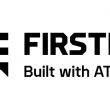So close, yet so far
Next-generation 911 (NG-911) can work, and the potential benefits are enormous, according to many industry experts. But while a NG-911 proof-of-concept project is complete, there are still many hurdles on the path leading to public-safety answering points (PSAPs) accepting live 911 calls on a standardized next-gen platform.
Many of the capabilities exist today in IP-based PSAPs, but the NG-911 standards have not been completed, in part because the economic downturn negatively effected the process, said Roger Hixson, technical issues director for the National Emergency Number Association (NENA).
“We’ve had some difficulties in terms of the fact that economics have limited the ability of subject-matter experts to be involved in that process at the rate we’d like them to be,” Hixson said. “As companies pull back as organizations, they tend to concentrate on their internal stuff, which limits the amount of time they can [spend] on other work.”
As a result, last year’s goal of having NG-911 beta test sites operational by the end of this year do not appear achievable. However, Hixson said he is encouraged by recent activities in the NG-911 arena and remains hopeful that central standards for NG-911 can be completed during the first quarter of 2010, which would allow for an NG-911 beta test to begin during the second quarter.
While significant focus is being placed on technical standards, other issues must be resolved to allow PSAPs to realize the true benefits of the next-generation architecture, which is being designed to enable call transfers easily between PSAPs and even reroute emergency calls in some instances. But before these features can be implemented effectively, PSAPs in a given region must work together, said Jack Chiaramonte, an associate with Booz Allen Hamilton who served as project manager for the NG-911 proof-of-concept project sponsored by the U.S. Department of Transportation (DOT).
“It’s not as much the technology as figuring out, ‘If one city had to evacuate its PSAP, where would those calls go? What agreements would have to be in place so that one city could share their calls with another city outside the affected area?'” Chiaramonte said. “A normal PSAP, 99% of the time, can handle its call volume with no problem. It’s that one incident in a year or five years that causes them to reach capacity very quickly and not able to handle that overflow.”
Indeed, such cooperation between PSAPs is crucial for next-generation success, particularly for smaller call centers that may lack the financial and staffing resources to make the leap to the next-generation architecture by themselves, said Rick Jones, NENA’s operations issues director.
As an example, Jones points to southern Illinois, where rural counties — some of which don’t even have 911 — have agreed to work together to pursue a mutually beneficial NG-911 solution, with each county agreeing to handle their neighbors’ emergency calls when volumes are heavy and to share resources.
“In the past two years, 17 counties have come together and signed memorandums of understanding to create a system across them all,” Jones said. “I find that to be amazing. And they don’t want to do a band-aid NG-911. They want to do real NG-911.”
Jones said NENA is considering a partnership with the group to conduct a trial in an attempt “to show that it can be done” in rural areas.
For urban PSAPs, the IP-based platform that is the foundation of NG-911 can be used to benefit call-center personnel, Jones said. One large city is considering the idea of establishing small answering points throughout the community, in areas where employees live, reducing the time it takes them to reach the workplace.
“In a virtual world, properly done, [the connected answering points are] all one 911 answering center,” Jones said.
Regardless of how the structure of the “virtual PSAP” is implemented, many call-takers and dispatchers continue to express concern about how they will be able to handle a potential deluge of information across the various media enabled by NG-911 — text, video and photos, in addition to traditional voice.
Many call-takers have expressed fears that they may miss important information while trying to multitask. Jones said he understands the worry, particularly for those who are unfamiliar with texting. However, Jones said his observations during the DOT NG-911 project largely put those concerns to rest, noting that the call-takers frequently were conducting multiple text chats simultaneously.
By using the “virtual PSAP” model, Jones said specialists could be trained to handle new communications that come via text or video, with the resources being shared by all participating call centers in a consortium. In addition, Jones said the text capabilities over an NG-911 platform offer the possibility of increased call capacity.
Jones said. “The one thing you cannot do very easily in a phone environment that you can do in a text [environment] is handle multiple messages and/or conversations at the same time,” Jones said.
Of course, there are times when a call-taker will need to focus all of his attention on a single person needing emergency help, and Jones said he is confident that software can be written to allow this to occur quickly and effectively.
“It would allow me to — once I hit an emergency that I need to focus on — shut off everything else and tell them not to send me anymore calls,” he said. “I can just push a button, and any text calls go somewhere else, because I’m doing medical dispatch. It’s all in the design.”
Jones said the information-overload issues raised regarding NG-911 have caused him to flash back three decades.
“When I dispatched in the ’70s, we didn’t have computers,” he said. “I went through this argument [with 911 personnel who said,] ‘Bring in computers? We can’t handle computers. We can’t do this other work and do our computers. Things will slow down, things will go bad, and I’ll miss things. It’s an extremely similar concern.
“As a youngster with an admitted fascination for computers,” Jones said adapting to a 911 computer environment was relatively easy for him, but it took some work for colleagues who were more comfortable operating in a voice-only environment.
Jones said he expects to see a similar trend in an NG-911 PSAP, with younger personnel immediately gravitating to the new technologies, while PSAP veterans work to adapt to them.
“Where it worked was where the management designed it well and trained them well,” Jones said, reflecting on the success of the 911 sector’s transition to computers.
| Today’s 911 | Next-Generation 911 |
|---|---|
| Virtually all calls are voice-centric made via telephones over analog lines | Voice, text or video from many types of communication devices sent over IP networks |
| Most information transferred via voice | Advanced data-sharing is performed automatically |
| Callers routed through legacy selective routers; limited forwarding / backup ability | Physical location of PSAP becomes immaterial; callers routed automatically based on geographic location; enhanced backup abilities |
| Limited ability to handle overflow situations; callers could receive a busy signal | PSAPs able to control call congestion treatment, including dynamically rerouting callers |
| Source: Intelligent Transportation Systems | |
Related Stories

















